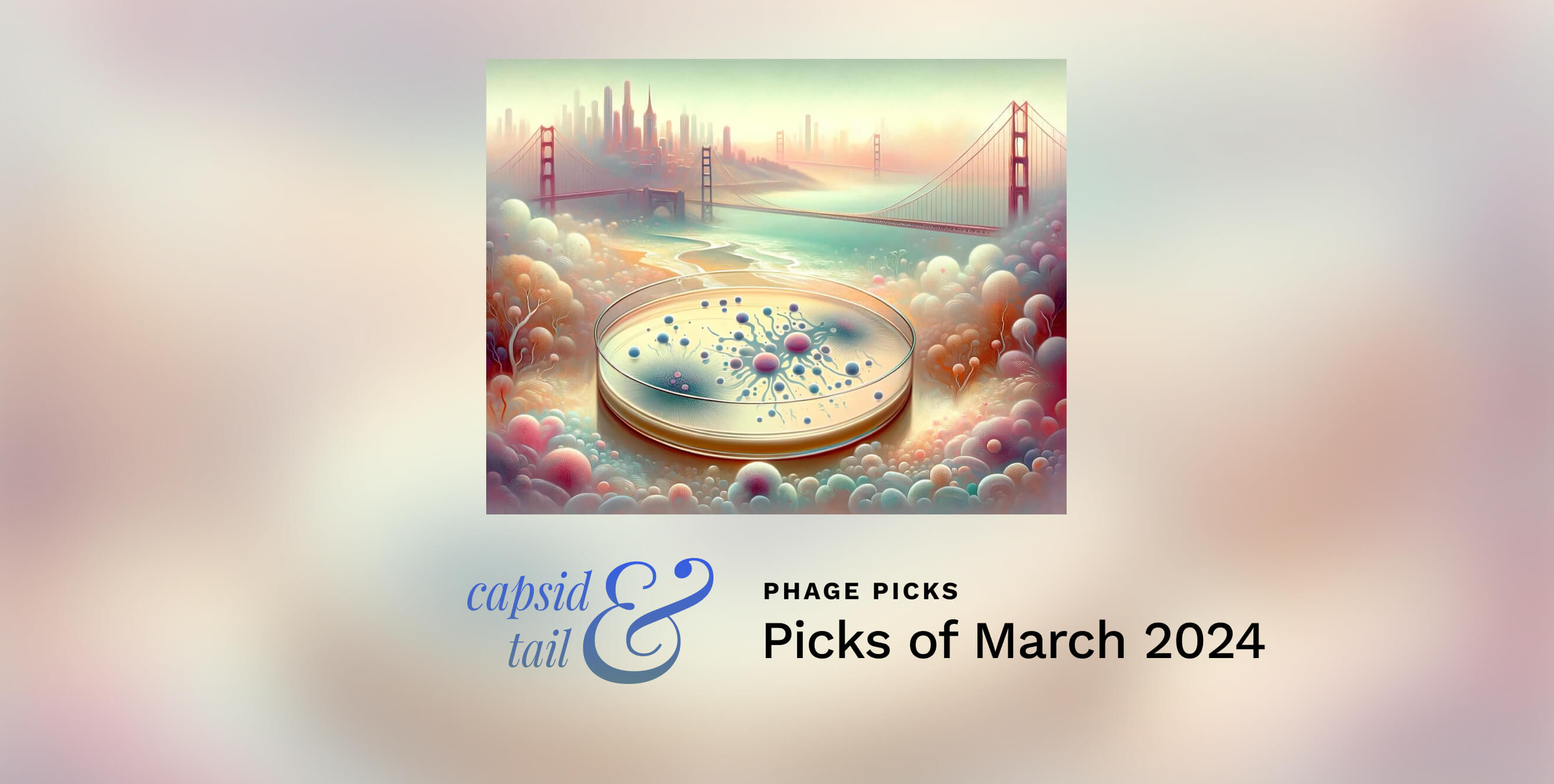Hi everyone!
We thought we’d kick off the year with a new format.
We’ve been reading phage papers for years — and have amassed a trove of our favorites. These are papers we come back to: over and over and over. They make us think. Reflect. And get us excited to get back in the lab (or computer) again!
We call these Phage Picks, and we urge you to take a look. These are casual recommendations of papers — from colleague to colleague.
We hope these papers excite you as much as they excite us!
Rapid assessment of changes in phage bioactivity using dynamic light scattering
What is it about?
Tejas Dharmaraj (Stanford University) and colleagues show us how to use Dynamic Light Scattering (DLS) as a simple, fast way to measure phage stability. DLS is commonly used in physics to quickly measure particle size, and many university departments likely have one of these machines already (try asking around!). Instead of always needing to do plaque assays, we can use DLS to get a quick readout on whether a phage has degraded or aggregated in solution, or if it’s still stable (and thus active — crucially, this paper shows how DLS correlates nicely with plaque assay-derived titres, although one thing it can’t detect is UV-induced damage).
Why we’re excited about it:
Anything that cuts down on time spent doing endless titres is golden in my books. DLS is a reliable, cheap, fast, and non-destructive alternative to check for phage activity. By having this assay running in our phage labs, we can keep regular tabs on our phage preps and rapidly get a much better sense of phage stability across different conditions. Also, this paper gets into other super handy tools like a nice area-under-the-curve assay for quantifying how much a phage has degraded/aggregated in solution, as well as software to readily analyze the DLS data (called PhageELF). Overall this is an awesome tools paper that everyone in the phage field needs to read!
~ Jessica
Tejas Dharmaraj, Michael J Kratochvil, Julie D Pourtois, Qingquan Chen, Maryam Hajfathalian, Aviv Hargil, Yung-Hao Lin, Zoe Evans, Agnès Oromí-Bosch, Joel D Berry, Robert McBride, Naomi L Haddock, Derek R Holman, Jonas D van Belleghem, Tony H Chang, Jeremy J Barr, Rob Lavigne, Sarah C Heilshorn, Francis G Blankenberg, Paul L Bollyky, Rapid assessment of changes in phage bioactivity using dynamic light scattering, PNAS Nexus, Volume 2, Issue 12, December 2023, pgad406, https://doi.org/10.1093/pnasnexus/pgad406
Large language models improve annotation of prokaryotic viral proteins
What is it about?
In this paper, the authors documented how they used protein language models (PLMs) to annotate proteins, as opposed to traditional methods. The team trained existing PLMs with well-annotated databases like PHROGS — and found 29% more protein annotations — including finding new integrases and a capsid protein.
Why we’re excited about it:
Using a rough analogy, traditional annotation tools are like “spell checkers” while PLMs are like ChatGPT. While spell checkers are decent at identifying and correcting words and sentences, they’re fairly rigid. While they can infer “Mivi is a cat” is about a cat, they fall apart on sentences like “Mivi loves tuna and purrs when it rains.” Meanwhile, large language models like ChatGPT can infer these because they’ve “seen” relationships between “tuna” and “purr” with cats in their training data.
This is super exciting because these tools can find “synonymous annotations” that we previously missed. This could help us detect more integrases before taking a phage to therapy, help us clean up annotation databases, and potentially even lead to discovering new patterns that could open up new research areas. Excitingly all the code and data is also contained in the paper (as a Github repo), so anyone can go in and reproduce it (I haven’t done this myself yet.)
~ Jan
Flamholz, Z.N., Biller, S.J. & Kelly, L. Large language models improve annotation of prokaryotic viral proteins. Nat Microbiol 9, 537–549 (2024). https://doi.org/10.1038/s41564-023-01584-8
That’s it, those are our favorite drops for this week! We’ll experiment with bringing you a new bunch of fresh picks every month — of a mix of 80’s, 90’s and today!
Oh and if you have suggestions for new papers, or how we can improve the format, let us know ([email protected]). Any feedback (nice or mean) will help us make Capsid more useful for you!
~ Jan & Jess






